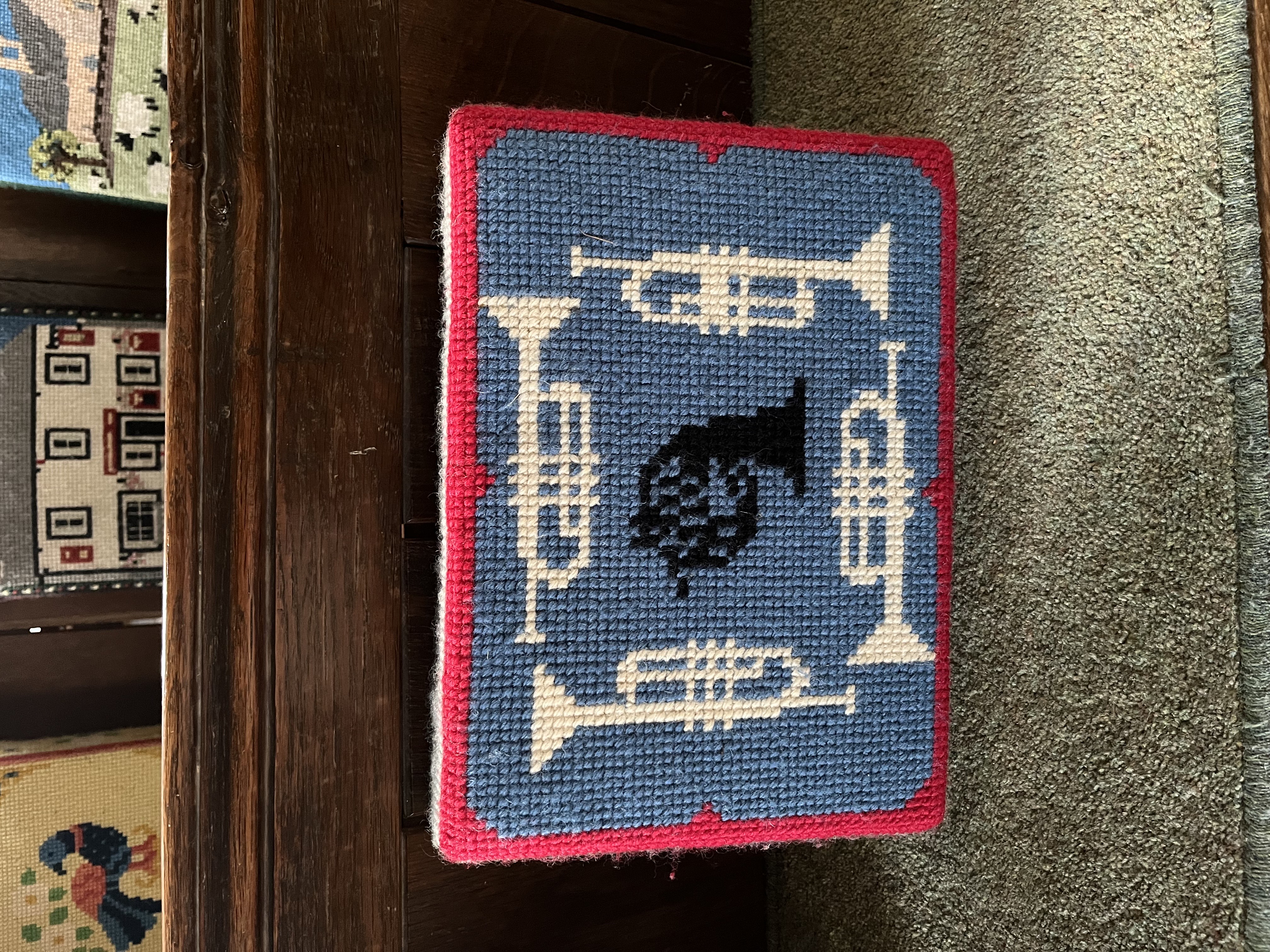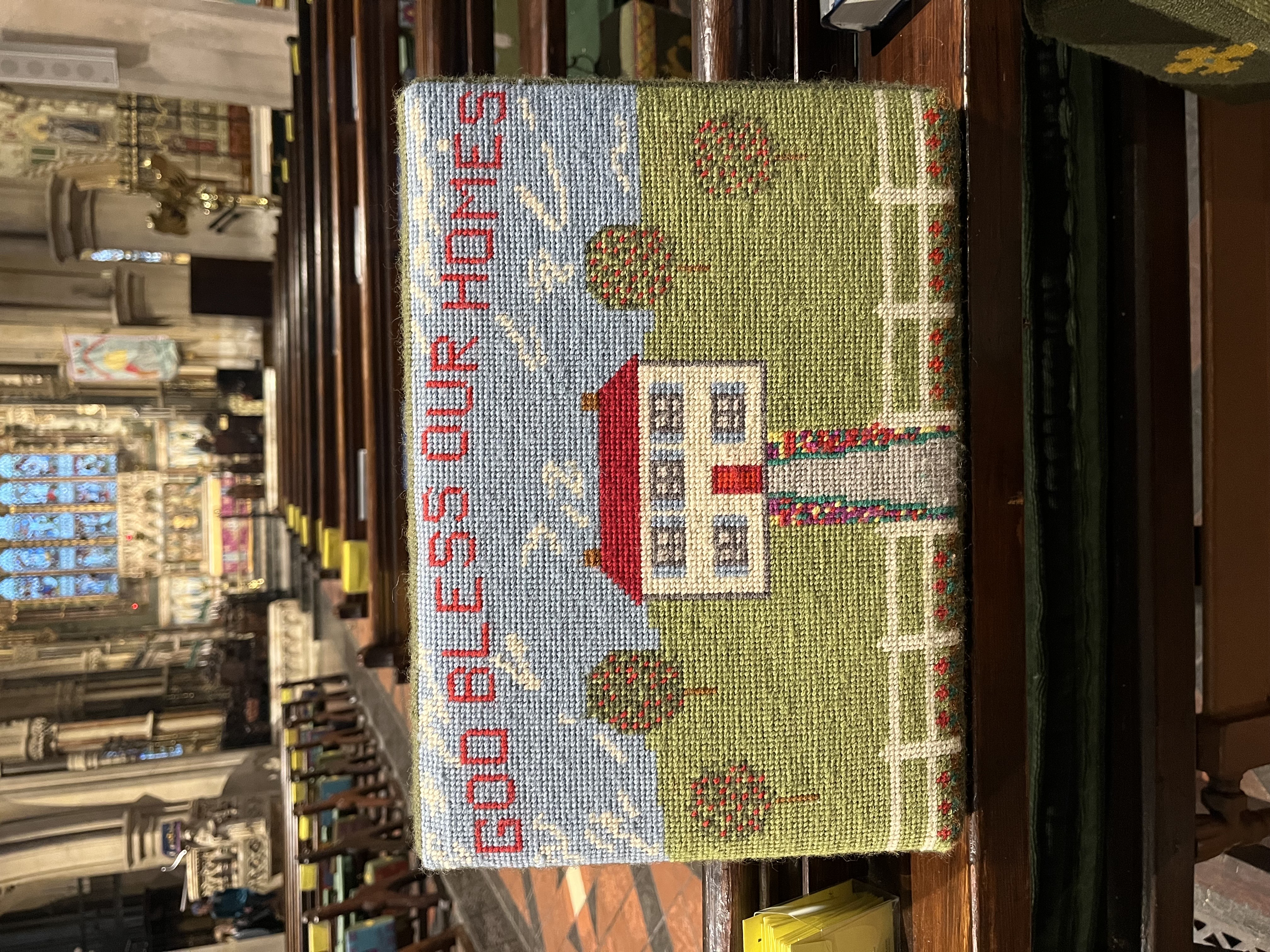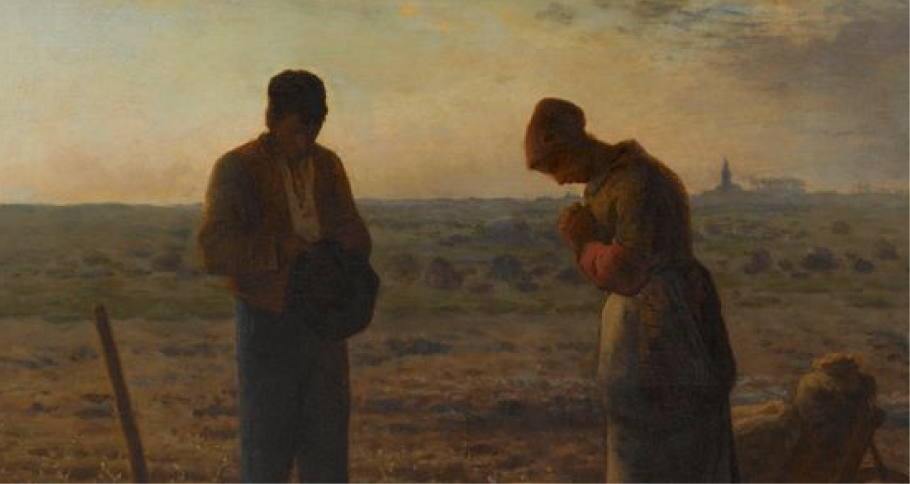Some people follow their football team the length of the country; I will travel as many miles to snoop around a medieval church. If it is friendless, I will traverse brambles and wade through nettles to get to its beauty. Each one is an awesome monument to the artisans who fashioned it, but the textile crafts within are my real grail.
As the daughter of a Royal School of Needlework alumna, I grew up surrounded by copes mounted on huge embroidery frames and gold-work samplers twinkling from every corner of my mother's studio. Her work adorned bishops and altar frontals on high days, but Anglican churches sometimes have a permanent display of more domestic stitching in the form of kneelers or hassocks.
A church arrayed with the painstaking handiwork of parishioners is intensely moving for those who have ever tried to keep a piece of cross-stitch square (it has a tendency to skew). I recently visited Holy Cross, Caston, in Norfolk, which was taking part in a fundraiser, along with five other Wayland churches. Hundreds of knitted mice were arranged into scenarios including a Dad's Army drama and bellringers mid-peel. The event was charming, but when I arrived at Holy Cross I only had eyes for the church's complete set of kneelers, all in perfect condition.

This kneeler bonanza was a rare find. Stone and wood have their enemies but textiles are even more delicate. Kneelers fashioned with pure wool are prey to light degradation, moths and, of course, knees if, that is, kneeling is still a part of the congregational habit.
For many Anglicans, kneeling other than for communion has been replaced by an inclination of the head and slight stoop of the shoulders. Ageing pews are being replaced by stacking chairs so that the church can be turned into a flexible space. As kneelers have been retired, they haven't been replaced because they are no longer needed or there is no place for them – literally.
Needleworkers have long shown their devotion to the comfort of their fellow parishioners through this solid British folk craft. The history of decorated hassocks and church cushions began in the 17th century with a sturdy technique similar to carpet making.
In the 19th century, Berlin work, in which wool is stitched into canvas, became popular. As a domestic tool wielded during the period's heavy romanticism, it was used to create needle paintings for the home as well as a covering for furnishings. Landscapes, allegorical motifs, animals and flowers were popular.
It was in the 1930s that decorated church kneelers truly made the business of churchgoing more comfortable. Inspired by those made for Winchester Cathedral by the textile artist Sybil Blunt, they ignited a new passion for church needlework. Post-reformation churches were less colourful than they had been so rows of stitched hassocks suspended on the backs of pews added a radiant display.
Designs used for traditional woolwork were just a starting point. National and local events, remembrances and more have been memorialised in the handwork of generations of (usually) women. Movingly, some have left their own messages honouring others in their labours.
Mary Thompson has created many kneelers for churches. "I always try to add surprises in the designs. I think about the many people who will use it or simply look at it, whether they're there for a service, a wedding or a funeral," she says. "Perhaps it will last for 50 years or longer, so it's important to make something of beauty."

Anyone who wants to try their hand at making a kneeler can seek inspiration at parishkneelers.co.uk. It has a mighty photography collection of 5,500 kneelers from around the country, as well as plenty of information about the process.
It also advises about the many ways in which a kneeler can go wrong – "use a rectangular frame: hoop frames distort the canvas". In short, it is the agony aunt every stitcher needs. Most usefully, the image bank can be searched thematically. This is especially useful for difficult or complex designs.
Whether tricky or simple, a completed kneeler is personal to the people who made them and the churches for which they were created. This is what makes them valuable as pieces of folk art, and memorable to those who use or simply admire them. I still remember a pew of kneelers in my childhood parish church that celebrated the flowers of the county. Through them I learned about our village's hedgerows and fields.
Despite changes in the way we worship, and the fact that church buildings need to be repurposed and monetised to survive, hope can be found in unusual places. Although many ills can be attributed to social media, it also provides a gathering point for healthier niche interests – church kneelers included. Instagram, for example, has a buoyant stream of accounts and followers all with an almost nerdy fascination for church needlework. This is encouraging.
So too is an upsurge of interest in Medievalism among the notoriously hard to impress Gen Z. As a counterpoint to the shiny, unyieldingly technical future we're all threatened with, it is heartening that the next generation of thinkers and doers may have an appreciation for the handcrafts that created modernity in the first place.
RELATED: Diocese removes cathedral’s kneelers used for Holy Communion
Photos: By Lally MacBeth, from the Collection of the Church Kneeler Archive
Tamasin Doe is a fashion journalist and teacher
This article appears in the October/November 2025 edition of the Catholic Herald. To subscribe to our thought-provoking magazine and have independent, high-calibre and counter-cultural Catholic journalism delivered to your door any where in the world click HERE.







.jpg)
.jpg)
.jpg)

.jpg)
.jpg)



